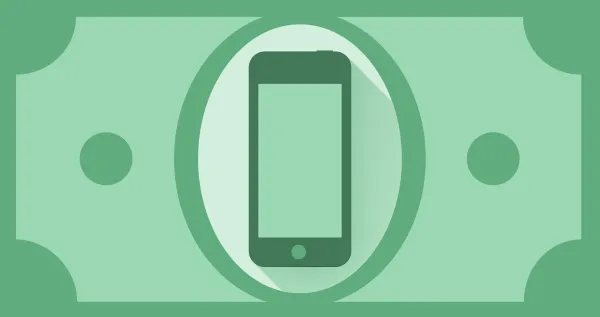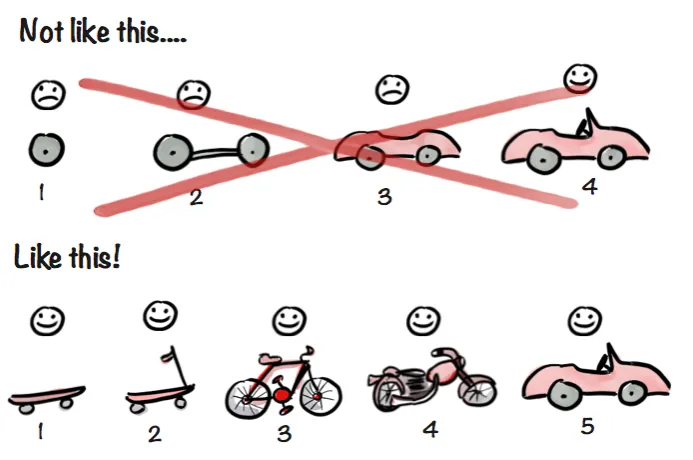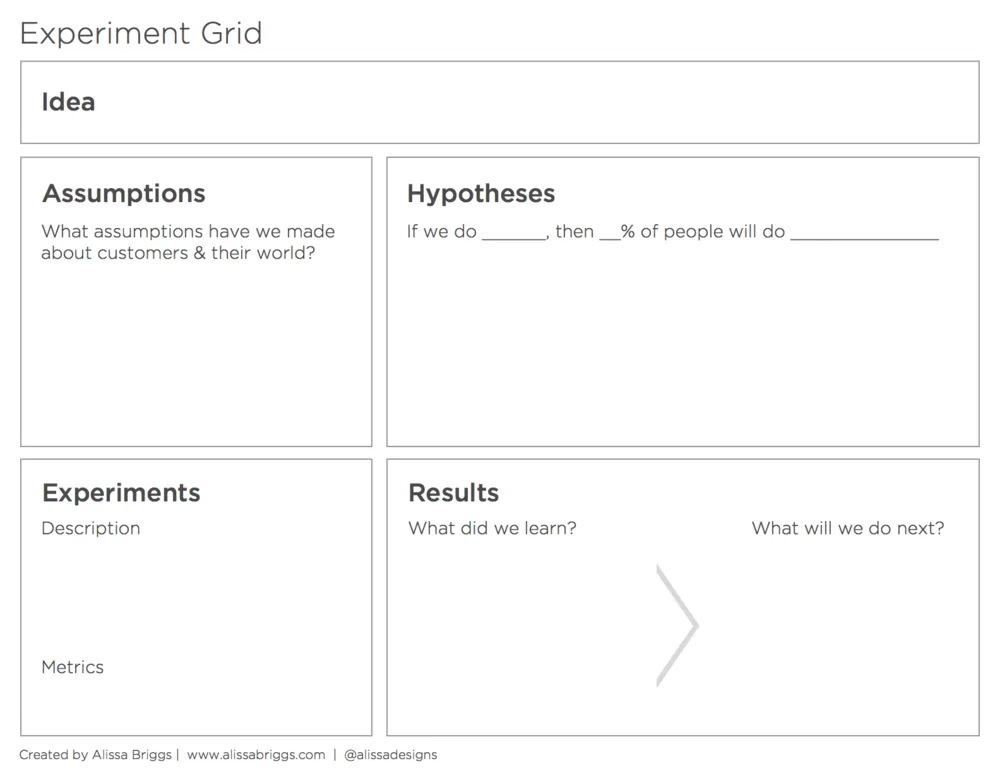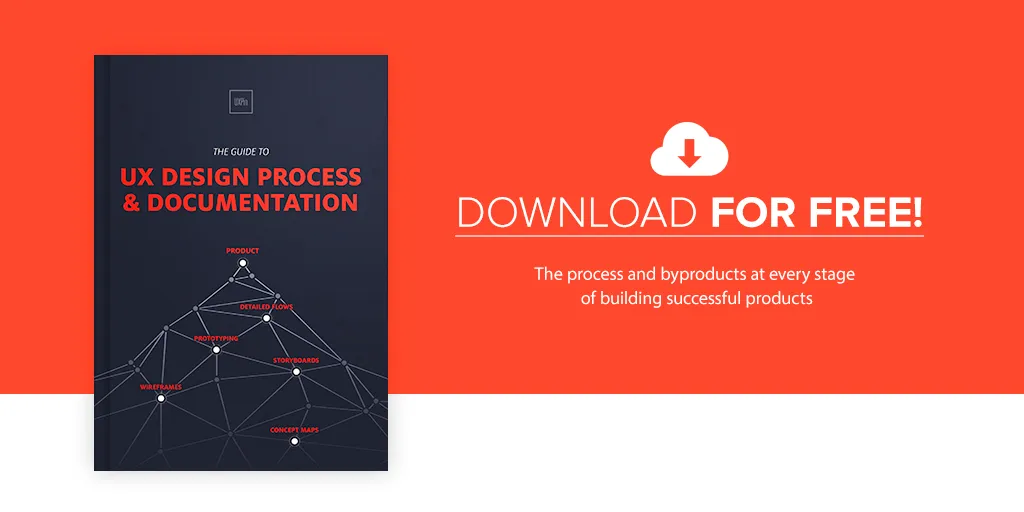I have a confession: I’ve never read Eric Ries’s book, Lean Startup.
I own it, I’ve flipped through it, but I’ve never been one to obsessively track which startups are doing what. I’m usually too busy working in one.
Luckily, a few years ago the startup I was working for actually invited Eric Ries spend a day with us in person, lecturing, answering questions, and giving us actionable advice. We felt like we totally had it down. We were building, and measuring, and then iterating. Totally.
But we weren’t, really. Not the way we should, anyways. We went through the motions without fully committing to the strategy behind Ries’s advice.
A year or so later, half the team was laid off. The spacious office I helped pick out the brand-matching paint colors for, big enough for all the growth we were expecting, was more than half-empty.
This story could be about hundreds of startups. It just keeps happening.
As designers, we have an obligation to prevent business mistakes through better thought processes. Let’s explore the wrong and right way to approach lean product design.
How Humans Want to Design Stuff
Here’s how the innovative process usually goes if we don’t restrain ourselves:
- We get an idea, and it’s a good one. So we start thinking about it. A lot.
- We get people on our side to help us out, and we plot, and we plan, and we make Powerpoint decks and all sorts of documents, and have meetings.
- We draw the whole thing out, and then eventually we build it. And then we put it out in the world — only when we’ve decided it’s good enough — and we hope people like it.
And sometimes they do. Other times they don’t. Most of the time, actually, we miss the mark.

If that weren’t the case, we’d all be bored millionaires, surrounded by all of our masterpieces.
What Are We Doing Wrong?
I’ve never been one to hop on bandwagons, or speak in corporate buzzwords, but I looked around the other day and noticed, without even having read the book, that I was totally a proponent of Lean principles.
Not because it’s the latest trend, or because I’m a fan of any particular author or speaker, but because it just makes sense. I work with many first-time entrepreneurs as a UX consultant and innovation coach now, and I see so many of them with a mindset that Lean practitioners are trying to argue us out of.
Here’s the thing: There’s a reason Lean is a movement, with books and talks and conferences and all those darn diagrams. All that stuff helps us internalize and adopt a mindset and methodology that doesn’t come natural to us.

Photo credit: Stelka Institute for Media. Creative Commons.
I interviewed a product manager candidate the other day who said he supported the Agile and Lean methodologies because “I always made sure my team learned from what we shipped.”
Instead of the lean mantra Build, Measure, Iterate, startups easily fall into the trap of Build, Ship, Build. Therein lies the beginning of the end for many companies
They’re building, shipping, then building the next thing. Maybe there’s some automatic measuring going on, but nobody really transforms that data into insights. If they do, maybe someone files a report or gives a Powerpoint presentation about it internally somewhere, and everyone in the room has some ideas about why this metric went down or this one went up, but it’s hard to say because the team shipped a bunch of stuff around that time anyway.
Speed Does Not Equal Momentum
But wait, it gets worse. Being lean is about moving fast, right?
Let’s say I have this idea for a new product or feature, and because I’m human, I’m going to draw it out, and plan, and build the whole thing. But because I’m lean, I’m just going to do all that much faster.

Photo credit: Henrik Kniberg. Spotify MVP Process.
Instead of building smaller pieces of ideas, getting feedback, then building more onto them once they’ve been validated in our market, we just build our big crazy ideas faster by putting in long hours, nights and weekends, cutting corners (like skipping user research) and calling it an MVP.
The reality is, we need to show our ideas to a lot of people, get multiple perspectives, then shape our idea into something that will appeal to a huge group of people. And the person’s feedback who matters most is usually the user.
That’s what Lean Startup has been trying to tell us to do. All that measuring and iterating is a multi-syllabic way of saying “show stuff to users and experts and get feedback, then make it better based on that feedback.”
You need to fulfill every criteria of an MVP. Not just minimize the effort, unless you want to learn that people don’t like half-hearted products. Form a hypothesis, then build the smallest complete thing required to validate or invalidate your assumptions.
If you’re just building a landing page to validate demand, make sure the copy is concise and the visual design is clean. If it’s a prototype created in a tool like UXPin, make sure the user flow of each task feels effortless before you dive into hi-fi designs.
Completeness matters more than complexity.

Let’s recap a bit from the free guide UX Design for Startups:
- The M is for minimum. What’s the smallest thing we can build?
- The V is for viable. You won’t know what’s viable if you’re skipping out on feedback.
- Finally, the P stands for product. That’s because sometimes you don’t even need to build a physical product to test your hypothesis (just refer to the origin stories of Buffer and Dropbox).
If you’re just building and iterating, your products won’t be minimal or viable.
How Humans Should Design Products
Here is my challenge to you. If you call yourself lean, if you actually want to be lean, stop building big ol’ fully completed products in compressed timelines.
Stop cutting corners and stop working 16-hour days. Stop instrumenting your software and plotting data into a machine somewhere and calling it measuring, and actually get out there and validate your ideas through conversations with real people. If your timeline doesn’t leave room for research, expand your timeline or shrink your product scope until it does.

Photo credit: Lean Blog
If you’re an entrepreneur, create a framework for your team’s experiments and empower them to take ownership of them. Hold them to it — remember you’re fighting against human nature here. Don’t hold them to creating your big drawn out plan in your head, hold them to the commitment to test small pieces of it every step of the way. Course correct when necessary, but give them some leeway to make and learn from their own mistakes.
Watch their innovation and creativity soar.
If you’re a designer or builder on a team, start thinking in smaller bite-sized experiments. Adopt a scientific mindset with useful tools like Alissa Brigg’s Experiment Grid.

Photo credit: Alissa Briggs
Don’t think measuring means shipping the product, then watching every tick of data once it’s live.
Get as much input from customers as you can before you ship it, then implement the insights you’ve gained from that feedback to improve what you want to ship. Remember, your instincts will tell you to keep working on it, keep planning, fleshing it out more.
Great product design is a result of regularly triangulating customer feedback, quantitative data, and your own designer instincts. Fight against the urge to just build so you can learn, iterate, and then build.
Next Steps
If you’d like to learn more techniques for better product design, UXPin offers a free library full of UX e-books. The 3 guides below are particularly relevant.
Feature image credit: Usability Geek



